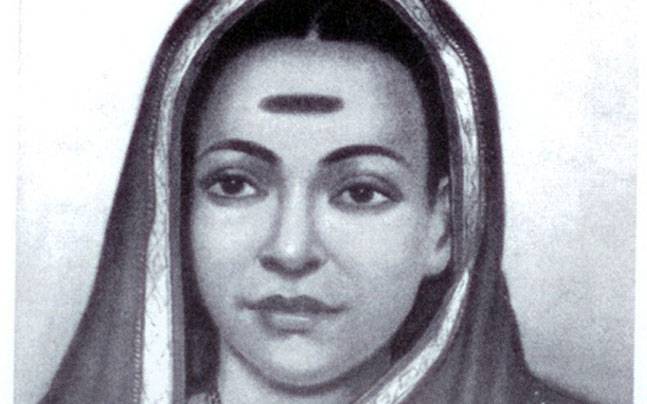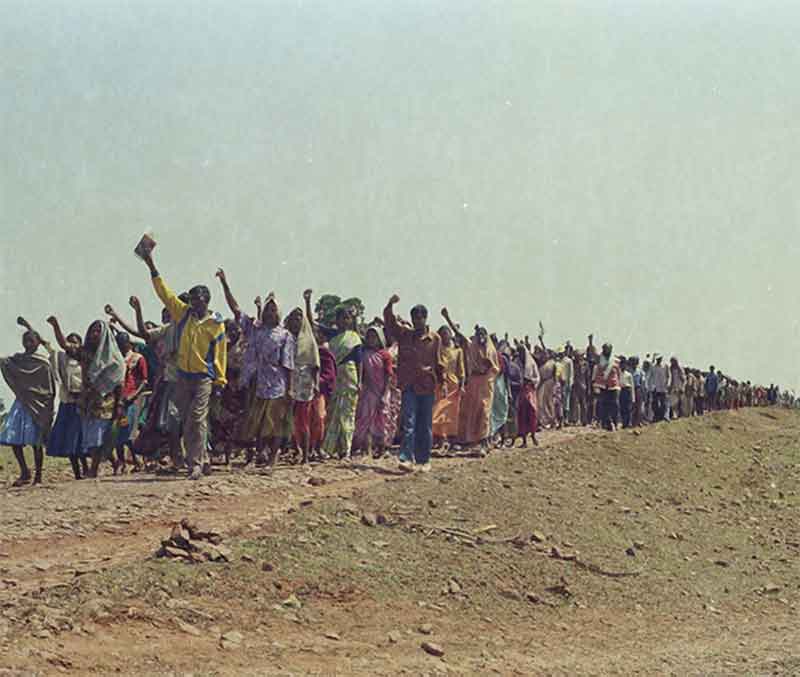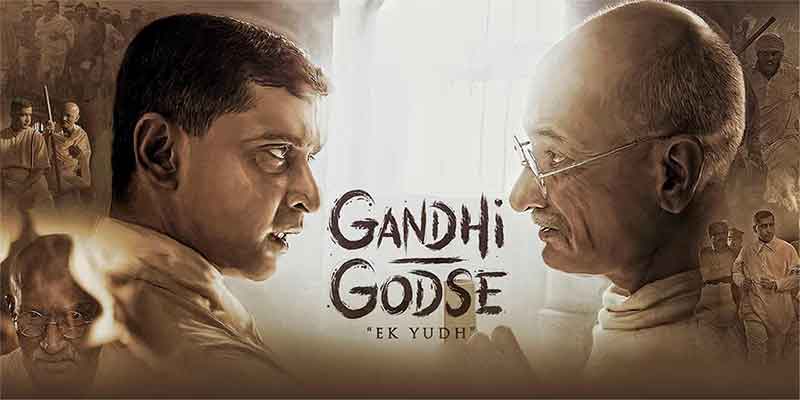
Overall, she got 67 years of life to live. She died of plague on 10 March 1897. And Jyotiba Phule had died seven years before her, at the age of 62. (28 November 1890) But Savitribai, who was 60 years old at that time, performed the cremation of Jyotiba after his death with great courage. Because due to the greed for property, her relatives had forbidden her adopted son Dr. Yashwant from cremating Jyotiba’s body, Savitribai herself performed this ritual. And after that, she devoted herself to complete the various works started by her and Jyotiba. Two hundred years ago, this kind of energy was born in an ordinary house, it was created by Savitribai, today on the occasion of Women’s Day, I feel that there cannot be a bigger example than this for every woman in our country.
Seeing the condition of women in India at that time, Savitribai Phule took the historic decision to start the first school for women. And after the end of the Peshwai, the first time women were educated in our country, the people of our country have in their minds the belief that “Manusmriti’s, “Naasti Sreenam Kriya Matreh Iti Dharme Vyavasthi (9-18)” means that for women, marriage is their Vedic or Upanayan ceremony. Women do not need to study with a Guru. Serving their husband is their Gurukul residence. And doing household chores in the kitchen is their ‘Homahavan’. Since this order was issued by Manusmriti for thousands of years, in the situation of the doors of education being closed for women forever, Mahatma Jyotiba Phule and his life partner Savitribai Phule together actively rebelled against Manusmriti through their works 180 years ago. That too in the stronghold of Sanatanis of Peshwai like Pune. This is a tremendous social revolution within the entire Hindu religion. Which was done about two hundred and fifty years ago.
And that is why the Sanatanis used to shower mud, dung and pebbles on Savitribai Phule every day, then walk through the showers of mud and dung on her to go to school, change her clothes smeared with mud and dung and get ready to teach. This is how Savitribai was made of. Today, there are examples of people leaving schools because of a small taunt. And about two hundred and fifty years ago, some mischievous people used to throw pebbles, mud and dung on a woman walking on the road every day, and only an extraordinary person can do the sadhana of going to school and teaching after calmly enduring it. We have been hearing the story of a Savitri in the Puranas since childhood, about bringing her husband back to life. Maharishi Arvind Ghosh has written a long poem on it.
This Savitri of the modern age, who started education for women, Shudras and downtrodden people, did the work with such devotion that only Savitribai Phule of the modern age could have done it.
If the ruling party thinks that it is politically prudent for a tribal woman to reach the position of President of our country, then it is mistaken. Because even today their parent organization RSS has rejected the Indian Constitution. Dr. Baba Saheb Ambedkar ji had announced the Constitution for the first time in the Constituent Assembly on 26 November 1950. Immediately after that, the then RSS chief Mr. Madhavrao Sadashivrao Golwalkar said that “There is no inclusion of Indianness in the current Constitution. This is a rag-like Constitution after copying the constitutions of other countries. What is the need for this when we have a Constitution written by Rishi Manu thousands of years ago?” And some officials of his party also keep trying to glorify Manusmriti. In which women have been asked to do only household chores within the four walls of the house. But due to parliamentary political compulsion, the Sangh’s political party BJP had to resort to the hypocrisy of elevating Draupadi Murmu ji to the post of President.
Which was violated by Savitribai Phule two hundred years ago by starting schools for women and Shudras. And due to her uninterrupted work of educating women and Shudras, while enduring the rhetoric and physical torture of the then Hindutvaists, today in our country women are getting equal opportunities to work shoulder to shoulder with men in every field of life, from the post of President to every other field. Hence humble salutations to Savitribai Phule, the liberator of women and Shudras, on her 128th death anniversary.
And with full respect for our country’s second President Sarvepalli Radhakrishnan, we would say that the true Teachers’ Day should be on January 3. Because Savitribai Phule started schools for women and Shudras for the first time in the history of India. And under what circumstances did she do it? Therefore, Teachers’ Day should be celebrated on the occasion of Savitribai Phule’s birthday, January 3. The only program of the current ruling party is to change the names of cities and many schemes in our country. And naturally, the current President Madam, being a tribal woman, would know very well how she has reached this position. So we request her that Teachers’ Day should be celebrated on January 3. Even the people of India are not aware of the works of Phule couple. From caste eradication to fighting against our wrong customs and most importantly, the establishment of schools for the education of women and Shudras, they started two hundred and fifty years ago. Mahatma Phule gave a detailed proposal on education to the Hunter Commission formed before 1882.
Savitribai Phule’s birth anniversary is on 3 January, so the bicentenary will be celebrated six years later in 2031. Savitribai was born on 3 January 1831 in a village called Naigaon in Khandala tehsil of Satara district. That means two years and nine months and fifteen days before the death of Raja Ram Mohan Roy. She got married to Jyotiba Phule at the age of nine. And immediately after completing her teacher training during Normal School teacher training (1845 – 47), on 1 January 1848, 99 years before India’s independence, she started the first girls’ school in Budhwar Peth, Pune, at a place called Bhide Wada. And she herself started working as a teacher. And her first students included 4 Brahmins, 1 Dhangar (sheep and goat herding community) and 1 Maratha, all six girls named: (1) Annapurna Joshi (2) Sumati Mokashi (3) Durga Deshmukh (4) Madhavi Thatte (5) Sonu Pawar (6) Jani Kardaile. These six girls were Savitribai Phule’s first students.
After five months, Jyotiba Phule established a second school on 15 May 1848 in Maharwada (a Dalit colony is called Maharwada in Marathi). And in the same year, the Phule couple and their associates established an educational institution for women and Shudras in Pune named ‘Native Female Schools’. Seeing all these activities, Govindrao Phule, who was Jyotiba Phule’s father, threw Jyotiba and Savitribai out of the house in 1849 due to the pressure of the Sanatanis. Savitribai’s parents also had the same attitude.
So Jyotirao’s Muslim friend named Usman Sheikh, after giving them shelter in his home, allowed them to open a school for adults in his home. And his sister Fatima Sheikh started helping Savitribai in the education work going on in Pune. During 1849-50, after opening schools in Poona, Satara and Ahmednagar, Savitribai Phule worked as a teacher here too. In 1851, she established an independent school for the girls of Maharwada. And on 3 July 1851, she started a girls’ school in Rasta Peth, Pune.
In 1852, a felicitation ceremony was organized by the British government under the chairmanship of Major Candy for her work in education. In which, after inspecting her schools, Savitribai Phule was awarded the Ideal Teacher award. In a newspaper named Pune Observer dated 29 May 1852, it was written that “The number of girls in Savitribai Phule’s schools is ten times more than in government schools. And the main reason for this is that the system of education for girls there is of a better standard than in government schools.”
Savitribai lived a total of 66 years and two months. But she devoted every moment to public works. Jyotiba died on 28 November 1890 at the age of 63 years and six months. And after his death, his adopted son Yashwant passed his matriculation examination in 1893 and joined the army as a doctor. And the plague disease started. Yashwant’s wife died on 6 March 1895. And Savitribai was doing tremendous service during the plague disease. She brought a Dalit youth suffering from plague on her back for treatment. And she herself became a victim of plague and ended her life on 10 March 1897.
In true sense, a thousand salutations to the memory of Savitribai Phule, the great D-class, D-caste and D-woman Yugasri. Later, she made special efforts to complete every work started by Jyotiba. She herself was present on Jyotiba’s first death anniversary near Otur Ahmednagar. And in the same program, Mahatma Phule’s first biography ‘Amarjivan’ was published. On 7 November 1892, his second collection of poems ‘Baavannakashi Subodh Ratnakar’ was published.
And in 1893, she was the President of Satyashodhak Parishad near Saswad, Pune, at a time when women were forbidden to step out of their homes. This was probably the first time that Savitribai presided over a public function. The event of her presiding over the Satyashodhak Samaj convention, which she started after Mahatma Phule’s death, took place 133 years ago. Savitribai is the highest example of Phule’s independent personality and in the true sense, the best example of women’s liberation.
Subscribe to Our Newsletter
Get the latest CounterCurrents updates delivered straight to your inbox.
On the other hand, in Bengal too, Pandit Ishwar Chandra Vidyasagar started women’s education eight to ten years later during 1856-57, hence the first woman teacher and the one who started education for women was Savitribai Phule. Therefore, today on the occasion of Savitribai Phule’s 128th death anniversary, we are making a humble request to our country’s President Mrs. Draupadi Murmuji to declare Teachers’ Day in India on January 3 instead of September 5.
Dr Suresh Khairnar is Ex. President of Rashtra Sewa Dal















































